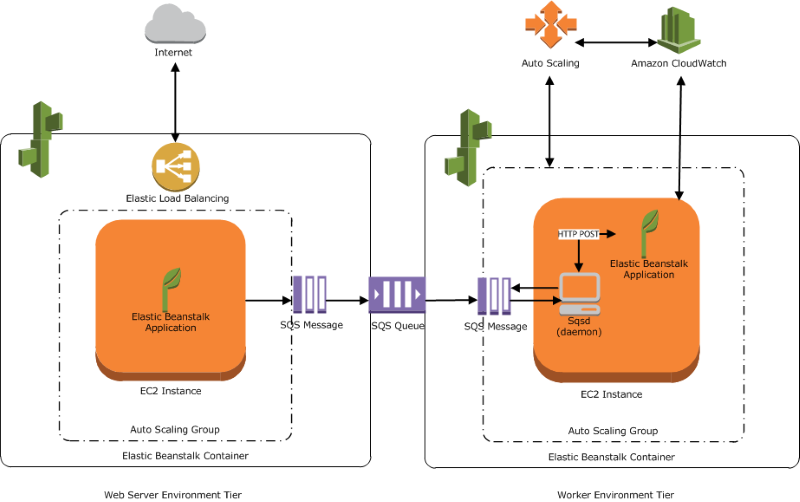
Introduction
Amazon Web Services (AWS) offers Amazon Simple Storage Service (S3), a cloud storage service. S3 is ideal for data lakes, websites, backups and even organizational backups because it can store and retrieve boundless amounts of data. As an object storage system, S3 keeps data under buckets, the largest unit of data storage, which affords endless flexibility and performance. In this blog we will see what S3 Bucket is and how to access the object with public access.
Why Use Amazon S3?
Amazon S3 is an essential component of modern cloud architectures for the following reasons:
- Durability: S3 is designed for 99.999999999% durability which ensures your data is kept safe.
- Scalability: S3 can handle boundless amounts of data which allows for seamless scaling.
- Availability: Guaranteed accessibility of data for whenever it is needed is designed at 99.99% availability.
- Cost-Effectiveness: Users are only charged for what they need through a pay-as-you-go pricing scheme. Other tiered storage options are also available to optimize costs.
- Integration: Apart from having seamless integration with other AWS services, S3 is very user-friendly thanks to the simple APIs that can be used to build custom applications.
Key Features of Amazon S3
- Storage Classes:
- S3 Standard: Ideal for frequently accessed data.
- S3 Intelligent-Tiering: Automatically moves data to the most cost-effective access tier.
- S3 Standard-IA: For infrequently accessed data with rapid retrieval requirements.
- S3 One Zone-IA: Low-cost option for infrequently accessed data stored in a single availability zone.
- S3 Glacier: Designed for long-term data archiving.
- S3 Glacier Deep Archive: Lowest-cost storage for rarely accessed data.
- Lifecycle Policies:
- Automate data transfer between storage classes based on predefined rules.
- Optimize storage costs by transitioning or expiring objects.
- Versioning:
- Maintain multiple versions of an object to protect against accidental deletion or overwrites.
- Access Control:
- Fine-grained permissions with AWS Identity and Access Management (IAM), bucket policies, and Access Control Lists (ACLs).
- Data Encryption:
- Support for server-side encryption (SSE) and client-side encryption ensures data security.
- Event Notifications:
- Trigger actions in response to specific events, such as object creation or deletion.
- S3 Transfer Acceleration:
- Speeds up data transfer by leveraging AWS’s global network.
How Amazon S3 Works
Amazon S3 operates on a straightforward architecture:
- Buckets:
- Buckets are containers for storing objects.
- Each bucket has a unique name and resides in a specific AWS region.
- Objects:
- Objects are the data files stored in buckets.
- Each object consists of data, metadata, and a unique identifier.
- Accessing Data:
- Data can be accessed via the AWS Management Console, AWS CLI, SDKs, or REST APIs.
- Global Accessibility:
- While S3 data resides in specific regions, it can be accessed globally with proper permissions.
Step by Step procedure for creating an S3 Bucket
Step1: Creating an S3 Bucket
- Navigate to S3 in the Storage Section, Click on create bucket.
- Name: devopshorizonbucket
- Leave as default option with ACL disabled option.
- Uncheck the option to block all public access and acknowledge the below option.
- Leave other options, click on create bucket.
Step2: Uploading object in s3 bucket
- Click on the S3 bucket, and inside the bucket, click on Upload to upload an image from your local computer.
- Once the object has been uploaded in the bucket, click on the object and copy the URL of the object.
- Paste the URL in the browser, You will see an AccessDenied message, which means the object is not publicly accessible.
- In order to give public access to all the objects inside the bucket, we have to write a bucket policy.
- Go inside the bucket, click on the Permissions tab, select Bucket Policy, and then click on Edit.
- Paste the below policy inside the bucket policy, copy the arn and replace inside the policy
{
“Id”: “Policy1”,
“Version”: “2012-10-17”,
“Statement”: [
{
“Sid”: “Stmt1”,
“Action”: [
“s3:GetObject”
],
“Effect”: “Allow”,
“Resource”: “replace-this-string-with-your-bucket-arn/*”,
“Principal”: “*”
}
]
}
- Click on Save Changes. Now, refresh the browser, and you will be able to see the image that has been uploaded to the bucket.
Use Cases of Amazon S3
- Backup and Restore:
- Store backups securely with high durability and quick retrieval options.
- Data Lakes and Big Data Analytics:
- S3 serves as a central repository for structured and unstructured data.
- Integrates seamlessly with analytics tools like Amazon Athena and AWS Glue.
- Static Website Hosting:
- Host static websites directly from an S3 bucket.
- Application Hosting:
- Store media files, configuration files, and logs for web and mobile applications.
- Content Delivery:
- Combine S3 with Amazon CloudFront to deliver content globally with low latency.
Best Practices for Amazon S3
- Enable Versioning:
- Protect against accidental deletions or overwrites by maintaining object versions.
- Implement Lifecycle Policies:
- Automate data transitions to cost-effective storage classes.
- Encrypt Sensitive Data:
- Use SSE or client-side encryption to secure your data.
- Restrict Public Access:
- Use bucket policies and IAM permissions to prevent unauthorized access.
- Monitor Usage:
- Leverage Amazon CloudWatch and AWS Cost Explorer to track and optimize usage.
- Use Pre-Signed URLs:
- Provide temporary access to private objects securely.
Conclusion
The building blocks of AWS Cloud Services, Amazon S3, provides dependable and secure storage facilities that can be scaled to various organizational levels. If you need to store backups, host websites, or create a data lake, S3 allows customization of its tools to effortlessly meet your requirements. Through cost-effective storage optimization strategies, accessibility, security, and data control can be enhanced by practicing correct feature use. For individuals engaging with cloud computing, mastering Amazon S3 is crucial as service storage is perpetually advanced. For insights on Cloud and AWS blogs, visit the DevOpsHorizon Website.



